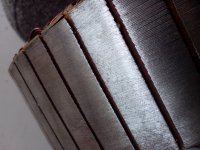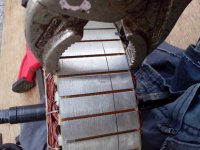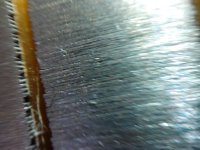parabellum
1 MW
Apparently, this Mxus 3000 hub did not want to fit in to magnet ring and was reduced on belt sander. Just looking at I would expect those lams shorted all around with shavings and act as 1 fat 45mm lam. :lol:
What can I do to have them un shorted again, without disassembling the whole motor?
How bad is it as is?

What can I do to have them un shorted again, without disassembling the whole motor?
How bad is it as is?





